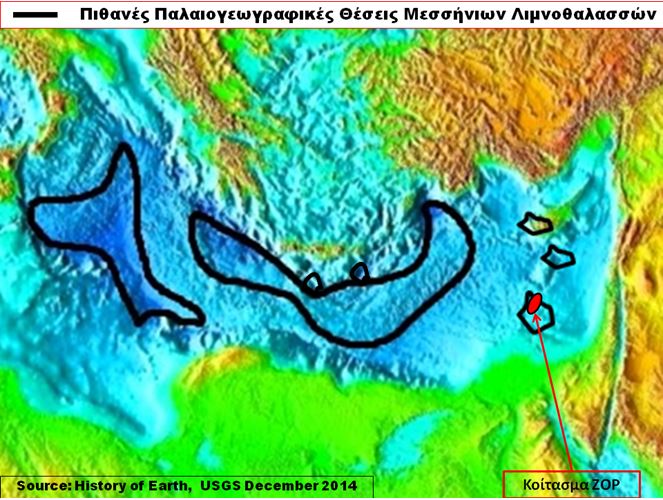21439 - The Zohr reserve indicates Greek Regions with significant Natural Gas reserves
E. Conophagos, N. Lygeros, A. Foskolos
Translated from the Greek by Athena Kehagias
We’ve stated with emphasis, that the discovery of the hypergigantic reserve of biogenic natural gas, Zohr, constitutes something preeminent for the Mediterranean.
For this discovery, the Italian company ENI used its experience from the location and development of the similar reserve Perla of Venezuela, which was created in a similar manner, ie, in paleo lagoons.
ENI stated that, this is the first discovery made within the Mediterranean based on the above mentioned model, which takes into account collateral invigoration- during the Miocene period- of karst limestone reserves from adjacent mother rocks with biogenic gas, which was created in conditions of extremely salty environment, within lagoons.
On the attached map, areas have been marked, which according to the opinion of most scientists were once lagoons, and more specifically during the Messinian era.
We strongly believe that, these regions should receive our utmost attention, because there are reasonable possibilities that Greek strategic natural gas stocks, are trapped within giant reserves of karst limestone.
We observe that the area south of Crete is particularly interesting.
We should additionally and specifically note that, the Cypriot psammite natural gas reserve Aphrodite, with an area of 100 square kilometers (km2), has recoverable reserves of ~ 120 Billion cubic metres of N / G, whereas, the Zohr reserve, with also an area of 100 km2, obtains recoverable reserves, most probably 10 times greater, ie. ~ 1 trillion m3.
This observation indicates the importance of identifying natural gas target reserves with karst limestone reservoirs, as opposed to the classic up to recently discovered natural gas deposits in psammite reserves.
We therefore consider that, there is an urgent need -on the part of the State- for the configuration of a new strategy regarding the detection and discovery of hydrocarbon reserves in the Greek EEZ.
This strategy should set as its ultimate aim, to attract major oil companies which could invest the necessary funds, with the main objective the detection of Greek natural gas reserves, through new research models, similar to the one suggested by the EMI company.

